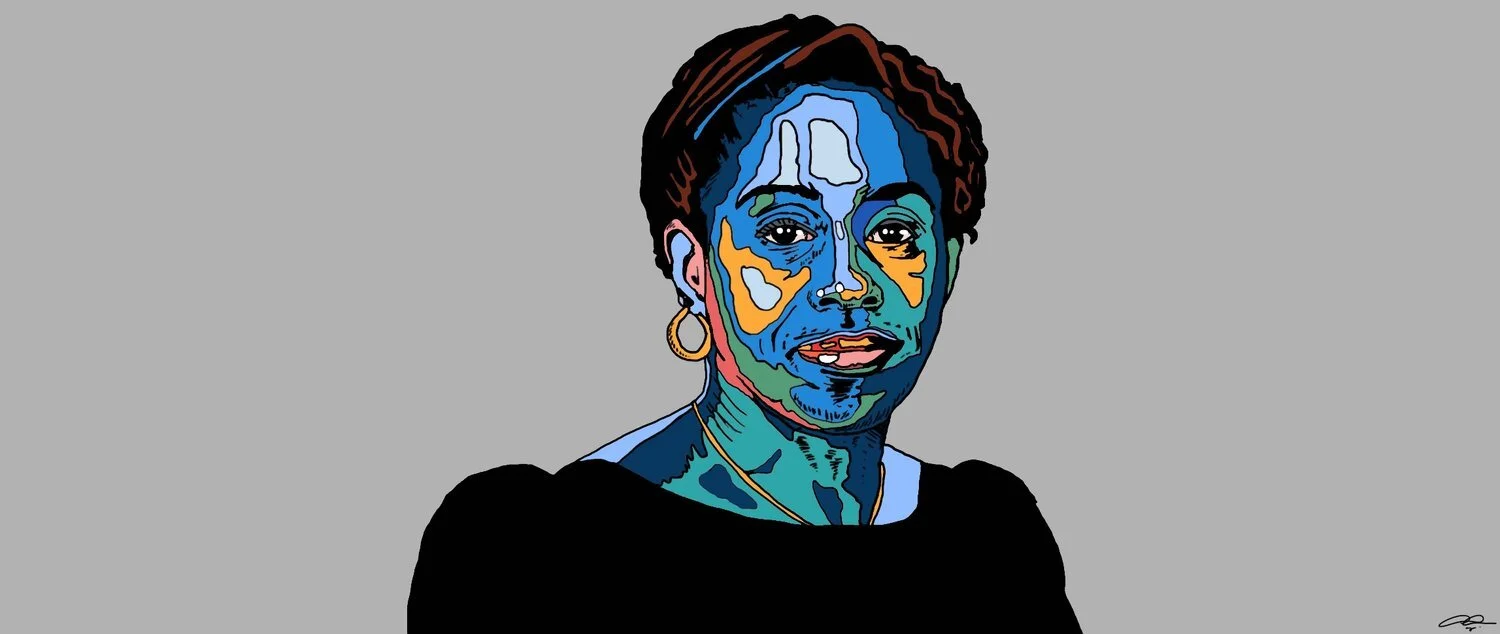Nnenna Okore
Illustration by Ayo Arogunmati
Ms. Okore, do you consider yourself to be the best in your field?
(Laughs)…I am not pompous enough to think of myself in those terms. What I want my work to do is to have an impact on others and contribute to contemporary conversations both in Africa and abroad. While my works have been recognized, it doesn't influence my person or practice.
Have your recognitions affected what you create?
While it is great to be recognized, I am not moved to create based on the possibility that I might be acknowledged through awards. The work is based on what I find interesting, what I am passionate about and how I can convey the best message. I move in different directions based on the immediacy of my interests or the things that stimulate creativity in me.
Do you follow any rules with the art you create?
I don’t have any specific rules I follow but one principle that is important to me is to avoid boxing myself into an idea and allow the materials to express themselves because they come alive in ways one doesn’t anticipate. For example, I work with paper that I shred, pulp, twist, braid, dye and wax. I am interested in the process whereby these materials dictate what I do next; and the journey becomes a conversation between the materials and my artistry.
You use newspapers quite significantly in your art, do you read the newspapers?
Yes, sometimes as I work with it. The content of the paper I use don’t necessarily have much impact on what I create. I am drawn to newspaper because it carries our history and provides a social narrative –like a daily diary of who we are as a people.
Does it matter who has published the newspapers?
That doesn’t matter to me because I rarely consider who or what is being published. I might pause occasionally when I come across a captivating image or headline but I don’t pay attention to the political aspects of the newspapers. At one time, National Geographic was a favorite of mine because of its coverage of many cultures, but I also acknowledge that much of that coverage perpetuates negative stereotypes.
You bring life to discarded materials, which of these materials give you the most difficulty?
I enjoy working with difficult and challenging materials because they spark my imagination and force me to problem-solve. The different materials such as newspapers, clay and burlap all have individual challenges. When they capture the essence of my imagination, it gives me tremendous joy, because I don’t enjoy using materials that have all the answers. Lately, I’ve had some difficulties with combining burlap and wire – the process of working with these is sometimes exhausting but I try to figure out new ways to make the two work together without losing my vision.
Where do you think the most waste exists?
I don’t use food in my work though most of the waste I see comes from food. It is an essential commodity that I think, particularly in the West, is not something that is purchased or consumed with caution. The slightest signs of aging or decay results in food disposal, and that bother me. Other products such as paper and plastics are also used extravagantly. There could be more efficient ways of producing and consuming these goods.
The environment is an important part of your art - do you work mostly outdoors?
I don’t do a lot of outdoor work. I have in the past when I was using sticks in my work, but lately I have been indoors because of the materials I am currently using for my art.
Why is working alone important to your creativity?
I work alone because I can’t afford assistants (laughs) – but honestly, I work alone because I like to be in full control. A few years back, I had some help in my small studio, but the space felt restricting, and affected my ability to be as productive. I realized over time that I am more prolific when I have my space to myself. I am able to think, plan my projects accordingly and ensure I am on schedule.


